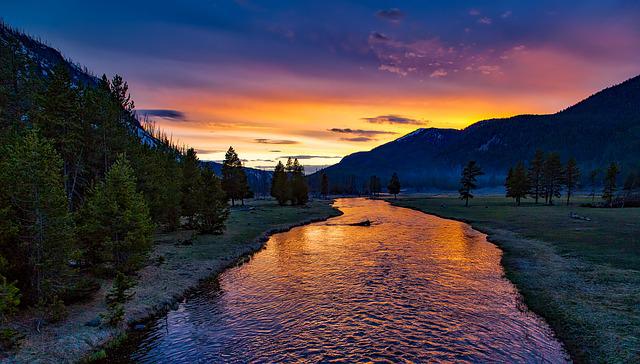Rivers of Pakistan
Pakistan is a country blessed with numerous river systems. These rivers are a source of livelihood for the population of Pakistan as well as provide a rich ecosystem for biodiversity to thrive. In addition, Pakistan has one of the world’s largest and longest running irrigation systems in the world known as the Indus Basin Irrigation System (IBIS).
The Indus River in particular is closely tied to our history, culture and economics. It has historically allowed civilizations like Indus, Harrappa and MoenjoDaro to thrive along its banks. To this date it provides about two-thirds of the water to meet the needs and requirements of irrigation of people across the region. Moreover, the Punjab province of Pakistan is named after the five rivers flowing through its plains.

Also read: Pakistan’s Living Indus Initiative And Its Importance
There are a total of 24 rivers flowing through Pakistan. 8 rivers flow in KPK, 5 in Punjab, 4 in Sindh and 7 in Balochistan.
Under the Indus Water Treaty signed in 1960 by the then presidents of Pakistan and India; The rivers Indus, Jhelum and Chenab are awarded to Pakistan whereas the rivers Ravi, Sutlej and Beas fall under India.
List of Major Rivers in Pakistan:
These are the rivers that together form a part of the IBIS:
- Indus River– It has a total length of 3180 Km this river originates from the Himalayan region near Tibet. It passes through the Karakoram range and then it is joined by the 5 rivers of Punjab that are mentioned below. Together they pass through the region of Pakistan forming the biggest irrigation network in the world before emptying into the Arabian Sea off the coast of Karachi. It is the longest river of Pakistan.
- Sutlej River– Total length is 1450 km. It is the longest of the rivers flowing through Punjab. It is a tributary of the Indus river joining it from the east. It is where the Bhakra dam is built for irrigation purposes in Rajasthan and Haryana regions of India.
- Chenab River– Total length is 960 km. This river flows in India and Pakistan and originates from the Himalayas by the joining of two headwaters. It flows through the Jammu Kashmir into Punjab and ultimately joins the Indus river. Do you know Eating Fish From Chenab River Pakistan Can Be Deadly For You?
- Jhelum River– It is a tributary of the Chenab river and has a length of 725 km. It flows through Jammu Kashmir as well and lies in the west. It is one of the rivers with great hydropower production potential and is the site of Mangla Dam.
- Ravi River– The Ravi river is a transboundary river crossing India into Pakistan. Its total length is 720 km. It also originates from the Himalayas where it drains into India and follows its course until it empties into the Arabian sea via the Indus. It is the smallest of the Punjab rivers.
- Beas River– It is an Indian allotted river and has a total length of 490 km. It is historically famous as the river that impeded Alexander the Great’s conquest of invading India and is where his troops refused to go any further. It is also a part of the Indus Basin network of rivers.
Together, the well known rivers in Pakistan according to province are:
- RIVERS IN KPK: Kabul River, Swat River, Chitral River, Kunhar River, Siran River, Panjkora River, Kurram River, Dor River, Bara River, Haroo River, Gomal River and Zhob River.
- RIVERS IN SINDH: Indus River, Lyari River (though it is no more than a drain now and is not a river anymore), Hub River, and Malir River.
- RIVERS IN PUNJAB: Ravi, Chenab, Jhelum, Sutlej and Beas Rivers.
- RIVERS IN BALUCHISTAN: Dasht River, Hub River, Hingol River, Gomal River, Mula River, Bolan River and Nari River.
Read: The Problems and Effects of Plastic Debris in Rivers and Seas of South Asia
List of Other/Minor Rivers in Pakistan are:
River Name |
Location/Presence |
Length |
| Gomal River | Dera Ismail Khan | 400 Kilometers |
| Sohan River | Potohar, North Punjab | 250 kilometers |
| Swat River | Swat Valley, KPK | 240 Kilometers |
| Astore River | Gilgit Baltistan | 120 Kilometers |
| Hingol River | Makran Region, Balochistan | 560 Kilometers |
| Gilgit River | Gilgit Valley | 240 Kilometers |
| Kunhar River | Kaghan Valley | 166 Kilometers |
| Dasht River | Gwadar District, Balochistan | 430 Kilometers |
| Panjnad River | District Bhawalpur | 71 Kilometers |
| Poonch River | Poonch District, Jammu Kashmir | 150 Kilometers |
| Zhob River | Balochistan | 410 Kilometers |
| Neelam River | Bandipora District of Kashmir | 245 Kilometers |
| Manawar / Tawi River | Joins from India in District Sialkot | 141 Kilometers |
| Gambila River/ Tochi River | North Waziristan | 322 Kilometers |
| Hunza River | Hunza Valley, Gilgit Baltistan | 190 Kilometers |
| Haro River | District Abbotabad | 120 Kilometers |
| Kabul River | Hindu Kush Mountains | 700 Kilometers |
| Kurrum River | District Kurrum, Kohat, KPK | 320 Kilometers |
| Shigar River | Shigar Valley, Gilgit Baltistan | 62 Kilometers |
| Panjkora River | Kumrat Valley, KPK | 220 Kilometers |
| Shyok River | Gilgit Baltistan | 550 Kilometers |
| Rupal River | Rupal Valley, Gilgit Baltistan | – |
| Siran River | Mansehra District, KPK | 130 Kilometers |
| Naltar River | Naltar Valley, Gilgit | – |
| Hispar River | Karokarama Mountains, Gilgit | 49 Kilometers |
| Lutkho River | KPK | – |
| Tangir River | Chilas, Gilgit Baltistan | 33 Kilometers |
| Shimshal River | Gilgit | – |
| Chapursan River | Gilgit Baltistan | – |
| Misgar River | Hunza District, Gilgit | – |
| Khunjerab River | Gilgit Baltistan | 250 Kilometers |
| Ishkuman River | Gilgit Baltistan | 30 Kilometers |
| Yasin River | Yasin Valley, Gilgit Baltistan | – |
| Braldu River | Gilgit Baltistan | 78 Kilometers |
| Saltoro River | Karokaram Range | – |
| Hushe River | Hushe Valley | 42.4 Kilometers |
| Nubra River | Karokaram Range | 80 Kilometers |
| Suru River | From Kargil District in India to District Skardu in Pakistan | 185 Kilometers |
| Drass River | From Kargil District in India to Drass Valley | 86 Kilometers |
| Shingo River | Gilgit Baltistan | – |
You might also like: Problems and Degradation of the Indus River System (IRS)
CONCLUSION:
Most origins of these rivers do not necessarily start in Pakistan but mostly flow from the Ladakh region of India passing through the Himalayas, Hindu Kush Mountains and the Karokaram range from where they may form a part of the Indus River as a tributary or divert into streams etc. Ultimately all these end in the Arabian Sea where the Indus River empties.
Also, check out:
Can Rivers and Lakes be Saved from Environmental Degradation?
I hope you all liked this post! Please comment below if you have any suggestions, comments, or feedback! We at #envpk love hearing from our readers! Thanks!




